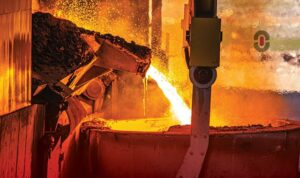Just five years ago in 2017, Japan was the world’s second-largest steel exporter, exporting to over 130 global countries and territories. These exports are used in a broad range of industries including automotive, shipbuilding, electrical machinery, civil engineering, construction, and industrial machinery.
With such a broad range of usage of this material, the global nature of the industry requires accurate and professional Japanese translation. In this article, we explore the nature and developments in the industry, the need for translation services, and some of the potential challenges that may arise with Japanese translation.
Developments surrounding the Japanese steel industry
As part of an in-depth analysis of the Japanese steel industry, the Ministry of Economy, Trade, and Industry identified several issues facing it. These include:
- Sophistication and diversification of user needs for materials: one of the ways this development has manifested itself is in the creation of ultra-high-strength steels with high formability in order to compete with other materials. In addition, the cooperation between materials is also being pursued, including adding new value through composites that combine different types of materials.
- Overseas competitors catching up: a further development is the increasing competition in the steel industry. The production of Japanese steel and subsequently Japanese steel exports require greater awareness, flexibility, and adaptability to overseas competition from major steel-producing markets such as Australia.
- Decreased domestic demand and energy and environmental restrictions: in addition to the above, when it comes to the production of Japanese steel, we are also seeing an increased commitment to environmental issues as the government has pledged, at least within the industry, to achieve carbon neutrality by 2050.
- Impact of digitalization on reform: finally, we are also looking at the impact of digitization on the reform of the industry, which means the implementation of artificial intelligence (AI) and other robotic-like aides to assist with the process of Japanese steel production.
The need for Japanese translation services
When it comes to Japanese steel exports, we already mentioned that the country exports to over 130 countries in the world. However, the top 10 markets for Japanese steel are: Thailand, China, South Korea, Taiwan, Vietnam, Indonesia, Mexico, the US, Malaysia, and India. These states account for the largest Japanese exports of steel and it is notable to mention that there is a major linguistic diversity between each of these markets.
While some like the US and India use English as the primary medium of communication, there are also Spanish and multiple other languages, each with its own level of complexity, nuances, and requirements for accurate translation. In an industry where marketing and trading with so many countries take place on a continuous basis, it has become necessary for Japanese translation services to deliver high-quality output in order to ensure seamless business and trade relationships.
Challenges that may arise with Japanese translation
As such, Japanese translation has become much sought after, especially with regard to Japanese exports of steel. However, translating into or from Japanese requires a certain finesse and a deep understanding of both the linguistic and cultural nuances that set the language apart. Here are a few areas of consideration that must be taken into account when doing a Japanese translation:
- In terms of vocabulary, Japanese has its own set of words for practically everything. However, there is intensive borrowing from Chinese as well as English.
- In terms of grammar, when doing a Japanese translation, it’s important that the sentence structure follows a subject-object-verb structure. What’s more is that verbs often appear at the end of sentences, making literal translations nonsensical.
- In addition to the above, honorifics and distinct levels of politeness must be factored in when doing a Japanese translation. This structure of formality levels means that verbs, adjectives, and even nouns can change, depending on the context.
- Finally, there is the challenge of typography. It is important to note that Japanese uses three types of scripts. These are Kanji, Hiragana, and Katakana. Although there are numerous rules that indicate which script should be used, there are also many exceptions. And adding to this complexity is the fact that Japanese can be written horizontally (left to right) and vertically (top to bottom).
With these linguistic nuances, there are many challenges that arise with translating and localizing Japanese. Among these include:

- Difficulty with literal translations.
- Absence of direct or accurate translation of words that have no direct correlation from the source language to the target language.
- Manual checks will need to be implemented alongside computer-assisted translation (CAT) tools for quality control. This can slow down translation processes quite significantly.
Lastly, there are some best practices to follow to manage translations in Japanese for the steel industry in particular. That’s why it’s essential to:
- Translate for cultural propriety and do not be afraid to embark on processes of transcreation
- Use a style guide to help you navigate the complexities of formality levels, tone of voice, honorifics, etc. A list of words that do not need to be translated, such as brand names, should also be included in the project description.
- Use the right tools and translators for the job and always factor in more time for the completion of the project than anticipated in order to ensure high-quality output.
Concluding thoughts
When it comes to Japanese translation for the steel industry in the country, there are so many nuances that have to be considered. There are, for example, legal, business, cultural, country-specific, governmental, and other requirements that will dictate the nature and anticipated outcomes of any translation project.
This is why it’s crucial to use a translation partner that is competent and uses the right sets of tools and processes to ensure high-quality translation and localization outcomes for your Japanese and steel industry-related translation project.
